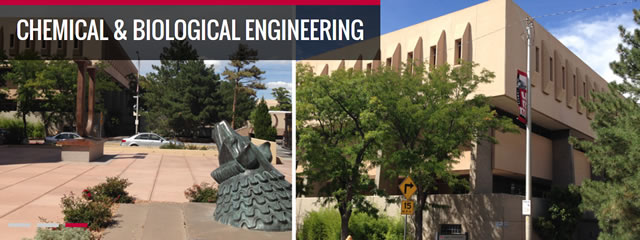
Chemical and Biological Engineering ETDs
Publication Date
Fall 12-2017
Abstract
With a limited availability of energy resources from petroleum and other fossil fuels, as well as growing concerns relating to the environmental implications of fossil fuel emissions, non-carbon fuels which can be utilized in proton and anion exchange membrane fuel cells (PEMFC’s/AEMFC’s), such as hydrogen and hydrazine hydrate (HH), are becoming more attractive as alternative fuels. Historically, platinum and platinum group metal catalysts (PGM) have been used as cathode and anode catalyst materials for both PEMFC’s and AEMFC’s. Although these catalysts are the highest performing catalysts available for the conversion of hydrogen energy in fuel cells, the limited availability and high costs of these materials make their commercialization prohibitive, and therefore the development of PGM-free catalysts, composed of inexpensive Earth-abundant materials, is needed.
Oxygen reduction reaction (ORR), which occurs at the cathode of AEMFC’s and PEMFC’s, typically requires larger amounts of catalyst due to the slow kinetics of ORR compared to hydrogen oxidation reaction (HOR). However, in the case of AEMFC’s the kinetics of ORR are significantly more facile due to differing kinetic mechanisms in alkaline media. As a result, the development of PGM-free cathode catalysts for AEMFC’s has been significant in recent decades, while the development of HOR and HH oxidation catalysts is still needed.
The most well-known and extensively studied anode catalyst for AEMFC’s is nickel, due to the stability and intrinsic catalytic activity of Ni towards HOR in alkaline media. Based on this, the aim of the research described in this dissertation has been to tune the catalytic activity of Ni for HOR as well as HH oxidation in alkaline media to match the catalytic performance of PGM catalysts. It has been found that alloying Ni with secondary metals (Zn, Mo, and Cu), can tune the electronic environment of Ni in such a way which results in drastically improved catalytic activity towards anodic reactions in alkaline media. Additionally, the use of carbon support materials for Ni alloys has been found to provide the additional benefit of decreasing the mass transfer resistance of the catalyst. Presented in this dissertation are the results of this research.
Keywords
fuel cell, anion exchange membrane fuel cells, electrolyzers, PGM-free, materials engineering
Document Type
Dissertation
Language
English
Degree Name
Chemical Engineering
Level of Degree
Doctoral
Department Name
Chemical and Biological Engineering
First Committee Member (Chair)
Plamen Atanassov
Second Committee Member
Fernando H. Garzon
Third Committee Member
Ivana Gonzales
Fourth Committee Member
Svitlana Pylypenko
Recommended Citation
Roy, Aaron Joseph. "Anodic Catalysts for Anion Exchange Membrane Fuel Cells." (2017). https://digitalrepository.unm.edu/cbe_etds/71


